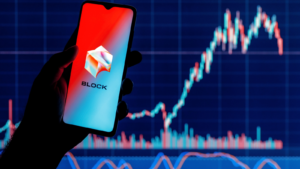One of the best ways to hunt for oversold fintech stocks to buy is by reviewing the 63 holdings held by the Global X FinTech ETF (NASDAQ:FINX). It tracks the performance of the Indxx Global FinTech Thematic Index.
The methodology page states that the names in the index are companies in developed markets “that are offering technology-driven financial services which are disrupting existing business models in the financial services and banking sectors.”
To be eligible for the index, they must have a $300 million market capitalization, have an average daily volume of $2 million or more over the past six months, and have a free float of at least 10% of the outstanding shares.
The components in the index are capped at a 6% weight. Further, the combined weight of companies exceeding 5% is capped at 40%. The remaining names are capped at 4.5%.
FINX is up 7.8% year-to-date but down 15.7% over the past 52 weeks. That should make the selection process easier.
Lemonade (LMND)

Lemonade (NYSE:LMND) is a Certified B-Corp that sells homeowners, auto, renters, pet, and term life insurance online. Further, it utilizes artificial intelligence to make smart underwriting decisions quickly and efficiently.
As a Certified B-Corp, it gives back unused premiums to non-profits. It accomplishes this by charging a flat fee from paid premiums as its profit. If there’s money left over after it pays claims and expenses, rather than investing those funds, they donate the money to their customer-designated charities. Over the past seven years, it’s given back $8.2 million in unused premiums. This year, it’s given back more than $2 million.
As for the stock, its shares are down 38% over the past month, eliminating all of its gains from May through July.
The cause of its decline was its $133 million loss over the first six months of 2023, resulting partly from its 94% gross loss ratio (GLR) in the second quarter from unreasonable weather catastrophes, or CATs. Typically, GLRs for insurance companies run between 60% and 70%.
However, when catastrophes occur, as they have this summer, the ratio goes up. When Hurricane Ian occurred in September 2022, Progressive (NYSE:PGR) had a September GLR of 97.2%. As Lemonade’s Q2 2023 shareholder letter noted, excluding catastrophes, its GLE was in the low 70s and continues to progress on that front.
If you’re an aggressive investor, the 38% correction over the past month puts its stock at one of the lowest points since going public in July 2020 at $29.
Block (SQ)

Block (NYSE:SQ) is down 28% over the past month and 14% year to date (YTD). Its stock closed out July near $80.
The Q2 2023 results showed net revenue of $5.53 billion, $1.1 billion higher than a year earlier and better than the Refinitiv analyst estimates. Adjusted earnings per share was 39 cents, 21 cents higher than a year earlier, and three cents higher than the consensus.
Its two main revenue drivers, Cash App and Square had gross profits of $968 million and $888 million during the quarter, up 37% and 18%, respectively.
However, as CEO Jack Dorsey said in the Q2 2023 conference call, the company is slowing hiring to control costs and, by extension, profits. That spooked investors.
A significant positive was the company raised its earnings before interest, taxes, depreciation and amortization (EBITDA) for 2023 by $200 million, to $1.5 billion.
Crypto haters probably didn’t like that it generated 44% of its net revenue from Bitcoin (BTC:USD) during the quarter. The reality is that financial services companies like Block have to be in the crypto space to grow their businesses.
Wise (WPLCF)

Wise (OTCMKTS:WPLCF) stock is down 17% in the past month but up 21% on the year. The company itself went public on the London Stock Exchange in July 2021. Interestingly, it did a direct listing on the LSE, which means it didn’t sell any new shares to investors. Rather, it allowed existing shareholders to sell some of their holdings.
“Wise was founded in 2010 by Taavet Hinrikus and Kristo Käärmann out of frustration from the high fees that came from sending money between Estonia and the U.K. using incumbents WesternUnion and MoneyGram,” Fortune wrote in July 2021.
We hear much talk about the democratization of finance. But these guys have actually done it. Sure, Wise is a for-profit business. Its adjusted EBITDA in fiscal 2023 was 239 million British Pounds ($301 million), 97% higher than in 2022.
The stock bottomed in July 2022, and since then, it’s more than doubled. By the end of 2024, it ought to be well into double digits.
On the date of publication, Will Ashworth did not have (either directly or indirectly) any positions in the securities mentioned in this article. The opinions expressed in this article are those of the writer, subject to the InvestorPlace.com Publishing Guidelines
